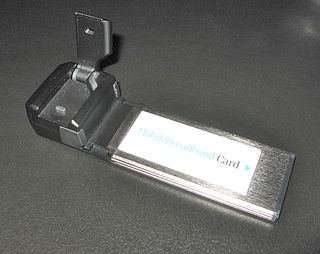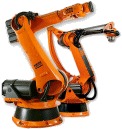
Profibus and Profinet International (PI) usually styled as PROFIBUS & PROFINET International is a large automation community in the world and responsible for Profibus and Profinet, the two important enabling technologies in automation.

Profibus and Profinet International (PI) usually styled as PROFIBUS & PROFINET International is a large automation community in the world and responsible for Profibus and Profinet, the two important enabling technologies in automation.
Profibus and Profinet International operates through the PI Support Center (PISC) based in Germany/Karlsruhe and coordinates the activities of a network of Regional PI Associations (RPAs), PI Competence Centers (PICCs), PI Training Centers (PITCs) and PI Test Labs (PITLs) in major industrialized countries. [1]
Furthermore PI hosts a large number of active Working Groups having the responsibility for developing, standardizing and maintaining the supported technologies.
Regionally and globally about 1,700 member companies [2] are working closely together. Members of the organization can be vendors of hardware, software and systems as well as end users and operators, scientific institutes and federations provided they support the purposes of PI and the respective Regional PI Association (RPA).
The technical and marketing tasks of PI technologies are performed by committees and working groups. Different topics of the same scope are covered by working groups that are consolidated within one committee. The committees are organized in a flexible matrix structure, which enables better visibility and coordination of the committees and their working groups tasks. The committee chairmen align the comprehensive tasks at technical strategy meetings of the advisory board. [3]
Beside these core technologies the following technologies are also supported:
The PROFIBUS Nutzerorganisation e.V. (PROFIBUS User Organisation, or PNO) was created in 1989. This group was composed mainly of manufacturers and users from Germany. In 1992, the first regional PROFIBUS Association (RPA) was founded (PROFIBUS Schweiz in Switzerland). Additional RPAs followed in Austria, Great Britain, France, Belgium and the Netherlands as well Sweden, Italy and Norway. In 1994 North America joined the group.
In 1995, all the eleven RPAs joined together under the international umbrella association PROFIBUS & PROFINET International (PI) and the actual structure with a chairman and a vice chairman as a management board was established. In the following years additional RPAs from Asia joined PI. Today, PI is represented by 25 RPAs around the world.
Chairmen of Profibus and Profinet International:
Vice chairmen of Profibus and Profinet International:

Profibus is a standard for fieldbus communication in automation technology and was first promoted in 1989 by BMBF and then used by Siemens. It should not be confused with the Profinet standard for Industrial Ethernet. Profibus is openly published as part of IEC 61158.
Open Platform Communications (OPC) is a series of standards and specifications for industrial telecommunication. They are based on Object Linking and Embedding (OLE) for process control. An industrial automation task force developed the original standard in 1996 under the name OLE for Process Control. OPC specifies the communication of real-time plant data between control devices from different manufacturers.
Fieldbus is the name of a family of industrial computer networks used for real-time distributed control. Fieldbus profiles are standardized by the International Electrotechnical Commission (IEC) as IEC 61784/61158.
The OPC Data Access Specification is the first of a group of specifications known as the OPC Classic Specifications.
Foundation Fieldbus is an all-digital, serial, two-way communications system that serves as the base-level network in a plant or factory automation environment. It is an open architecture, developed and administered by FieldComm Group.

Profinet is an industry technical standard for data communication over Industrial Ethernet, designed for collecting data from, and controlling equipment in industrial systems, with a particular strength in delivering data under tight time constraints. The standard is maintained and supported by Profibus and Profinet International, an umbrella organization headquartered in Karlsruhe, Germany.
OPC Unified Architecture is a machine to machine communication protocol for industrial automation developed by the OPC Foundation. Distinguishing characteristics are:
PDF/UA, formally ISO 14289, is an International Organization for Standardization (ISO) standard for accessible PDF technology. A technical specification intended for developers implementing PDF writing and processing software, PDF/UA provides definitive terms and requirements for accessibility in PDF documents and applications. For those equipped with appropriate software, conformance with PDF/UA ensures accessibility for people with disabilities who use assistive technology such as screen readers, screen magnifiers, joysticks and other technologies to navigate and read electronic content.

Mobile broadband is the marketing term for wireless Internet access via mobile networks. Access to the network can be made through a portable modem, wireless modem, or a tablet/smartphone or other mobile device. The first wireless Internet access became available in 1991 as part of the second generation (2G) of mobile phone technology. Higher speeds became available in 2001 and 2006 as part of the third (3G) and fourth (4G) generations. In 2011, 90% of the world's population lived in areas with 2G coverage, while 45% lived in areas with 2G and 3G coverage. Mobile broadband uses the spectrum of 225 MHz to 3700 MHz.

Codesys is a development environment for programming controller applications according to the international industrial standard IEC 61131-3. The main product of the software suite is the CODESYS Development System, an IEC 61131-3 tool.
Sercos III is the third generation of the Sercos interface, a standardized open digital interface for the communication between industrial controls, motion devices, input/output devices (I/O), and Ethernet nodes, such as PCs. Sercos III applies the hard real-time features of the Sercos interface to Ethernet. It is based upon and conforms to the Ethernet standard. Work began on Sercos III in 2003, with vendors releasing first products supporting it in 2005.
WirelessHART is a wireless sensor networking technology based on the Highway Addressable Remote Transducer Protocol (HART). Developed as a multi-vendor, interoperable wireless standard, WirelessHART was defined for the requirements of process field device networks.
Parasoft is an independent software vendor specializing in automated software testing and application security with headquarters in Monrovia, California. It was founded in 1987 by four graduates of the California Institute of Technology who planned to commercialize the parallel computing software tools they had been working on for the Caltech Cosmic Cube, which was the first working hypercube computer built.
The CC-Link Open Automation Networks Family are a group of open industrial networks that enable devices from numerous manufacturers to communicate. They are used in a wide variety of industrial automation applications at the machine, cell and line levels.
PROFIenergy is a profile of the PROFINET communications protocol that allows the power consumption of automation equipment in manufacturing to be managed over a PROFINET network. It controls energy usage during planned and unplanned breaks in production. No external hard-wired systems are required. The technology standard is managed by the industry association Profibus and Profinet International.

Comau is an Italian multinational company based in Turin, Italy and is part of automaker Stellantis. Comau is an integrated company in the industrial automation field with an international network of 8 manufacturing plants, 7 facilities dedicated to the development of products and technologies, 5 establishments focused on digital skills and technologies, that span 14 countries and employ more than 9,000 people.

OSIsoft, LLC was a manufacturer of application software for real-time data management, called the PI System. Founded in 1980, OSIsoft was privately held and headquartered in San Leandro, California. In August 2020, it was announced that the UK-based production company Aveva agreed to buy OSIsoft in a deal worth $5 billion; the purchase was subsequently completed on 19 March 2021 for a final consideration of £3,831.4 million.

Robotic process automation (RPA) is a form of business process automation technology based on metaphorical software robots (bots) or on artificial intelligence (AI)/digital workers. It is sometimes referred to as software robotics.

User Association of Automation Technology in Process Industries (NAMUR), established in 1949, is an international association for users of automation technology and digitalization in the process industries with its headquarters in Leverkusen, Germany. The association represents the interests of, and supports the experience exchange among over 160 member companies and with other associations and organizations. Work results are published in the form of NAMUR recommendations and worksheets and submitted to national and international standardization bodies as proposed standards.